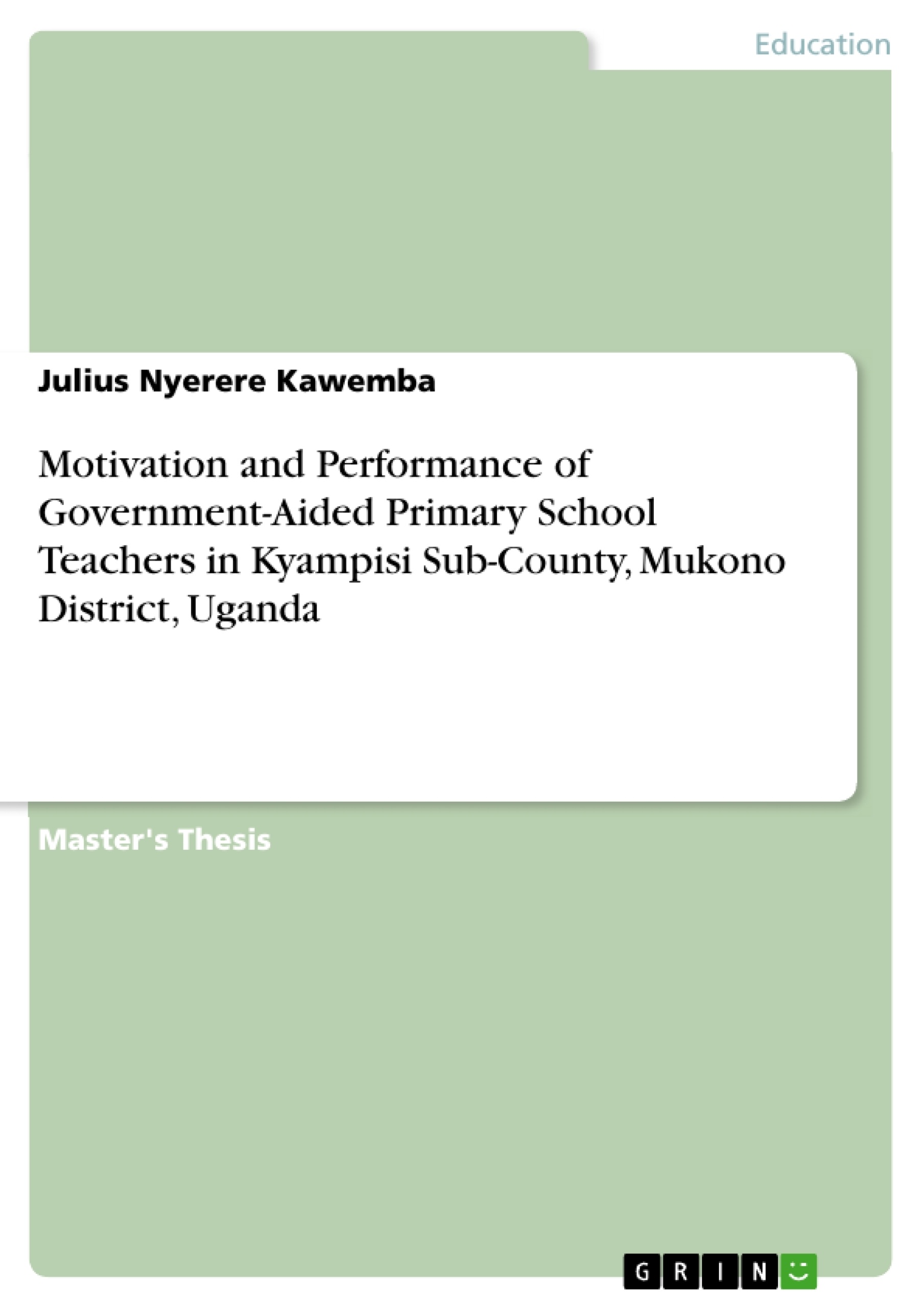There seems to be controversy as to what really motivates employees (teachers). In the researcher’s own observation, different employees tend to have preference for different motivational factors and therefore perceive them as being motivational to their performance. This is because we all differ in our interests and understanding and therefore react differently on different aspects. While one employee may prefer being offered a car, another will prefer recognition, promotion and appreciation instead. Thus making it difficult to understand what really motivates employees to perform well. The first chapter presents the background, problem statement, purpose, specific objectives, research questions, hypotheses, scope and significance of the study.
Several previous scholars have attempted to relate motivation to job performance. Therefore, the purpose of the second chapter is to review literature relating to the variables in the study. It also presents the theoretical review, conceptual framework or model and literature related to the three respective objectives. The related literature is presented in line with the objectives that guided the study. It is presented in subheading of; remuneration and job performance, work environment and job performance and administrative policies and job performance.
The third chapter presents a description of how the research was carried out. It gives systematic steps and key areas that were followed in the empirical part of the study. These included; the design, population, sampling strategies, data collection methods and instruments, data collection methods and instruments, data quality control, procedure and data analysis.
Chapter four presents the description of the background variable of respondents, the dependent variable (job performance) and testing of hypotheses.
Chapter five presents the discussion of the results of the study derived from the data presented in Chapter four basing on the respective research hypotheses. The discussion leads into varying conclusions and a number of recommendations, areas of further research are given.
Inhaltsverzeichnis (Table of Contents)
- Chapter One: Introduction
- Introduction
- Background
- Historical perspective
- Theoretical perspective
- Conceptual perspective
- Contextual perspective
- Statement of the Problem
- Purpose of the Study
- Specific Objectives of the Study
- Research Questions
- Hypotheses
- Scope of the Study
- Significance of the Study
- Limitations of the Study
- Assumptions of the Study
- Definition of Terms
- Chapter Two: Literature Review
- Chapter Three: Methodology
- Research Design
- Population of the Study
- Sample and Sampling Techniques
- Data Collection Methods
- Data Analysis Techniques
- Ethical Considerations
- Chapter Four: Data Presentation, Analysis and Interpretation
- Chapter Five: Discussion, Conclusions and Recommendations
Zielsetzung und Themenschwerpunkte (Objectives and Key Themes)
The dissertation aims to investigate the factors influencing the motivation and performance of government-aided primary school teachers in Kyampisi Sub-County, Mukono District, Uganda. The study seeks to understand the relationship between various motivational factors and teacher performance, ultimately providing insights into strategies for improving teacher motivation and performance in the context of government-aided schools.
- Motivation of government-aided primary school teachers
- Factors influencing teacher performance
- Relationship between motivation and performance
- Strategies for improving teacher motivation and performance
- Contextual factors impacting teacher motivation and performance in Ugandan primary schools
Zusammenfassung der Kapitel (Chapter Summaries)
Chapter One provides an introduction to the study, outlining the background, problem statement, purpose, objectives, research questions, hypotheses, scope, and significance of the research. It explores the historical, theoretical, conceptual, and contextual perspectives related to teacher motivation and performance.
Chapter Two presents a comprehensive review of existing literature on motivation and performance in the context of education, drawing on various studies conducted in Uganda and beyond. The chapter examines different theories of motivation, factors influencing teacher performance, and strategies for enhancing motivation and performance in educational settings.
Chapter Three outlines the methodology employed in the study, including the research design, population, sample selection, data collection methods, data analysis techniques, and ethical considerations.
Chapter Four presents the findings of the study, providing a detailed analysis of the data collected from government-aided primary school teachers in Kyampisi Sub-County. The chapter explores various aspects of teacher motivation and performance, drawing insights from the data and interpreting the results within the context of the research objectives.
Schlüsselwörter (Keywords)
Key terms and concepts explored in this dissertation include: teacher motivation, teacher performance, government-aided primary schools, Ugandan education, motivational factors, performance indicators, contextual factors, research design, data analysis, qualitative research, quantitative research, mixed methods research, and educational management.
- Quote paper
- Julius Nyerere Kawemba (Author), 2010, Motivation and Performance of Government-Aided Primary School Teachers in Kyampisi Sub-County, Mukono District, Uganda, Munich, GRIN Verlag, https://www.grin.com/document/367424



